Continued
I’m back with some more pictures from last week’s four day, photography epic. This scene is from the last site we visited, the aptly named Emerald Lake. My timing was fortunate, to capture the two canoeists, plying the placid water of the lake. The lake is bounded by Emerald Peak (left) and Michael Peak (right).
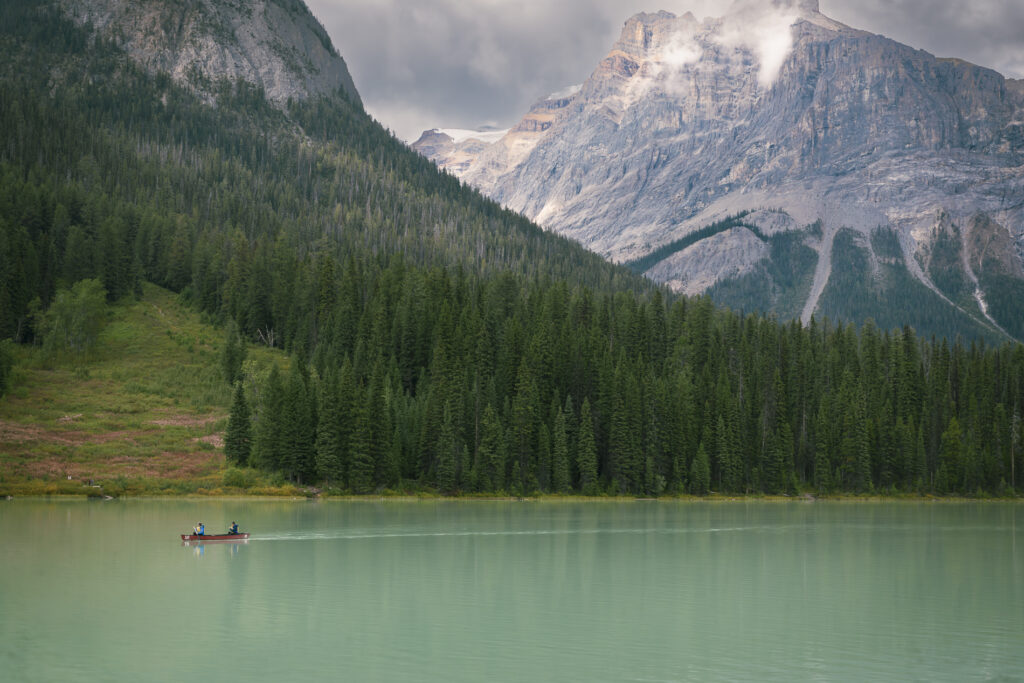
This is one of the alternate views of Lake Louise I was seeking, different from the usual positions many photographers have favoured. In this case, I took the picture from a different location. It doesn’t capture the reflection of the glaciers in the distance as well, but I quite like the rocks and flowers I was able to include in the foreground.
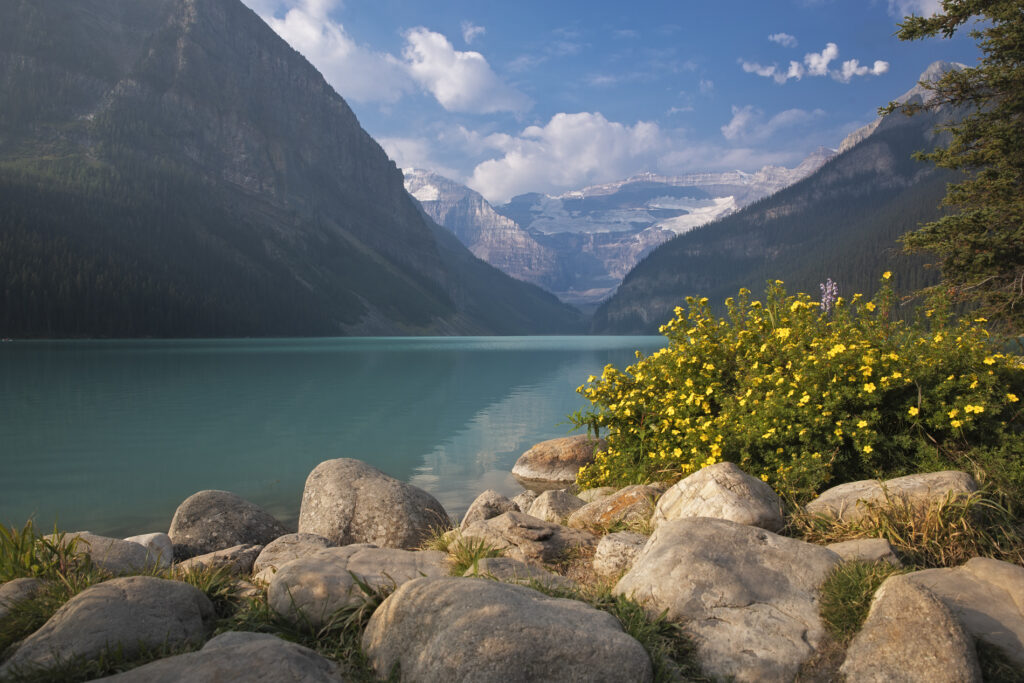
This picture, taken in Yoho National Park, zooms in on the base of the Takakkaw Falls. My purpose was to capture the falling water striking the rocks after a descent of close to 1,000 feet. My camera performed well, capturing the pandemonium created by the violent dispersion of the water as it impacted the rock. I used a shutter speed of 1/1000 of a second to ‘freeze” the action.
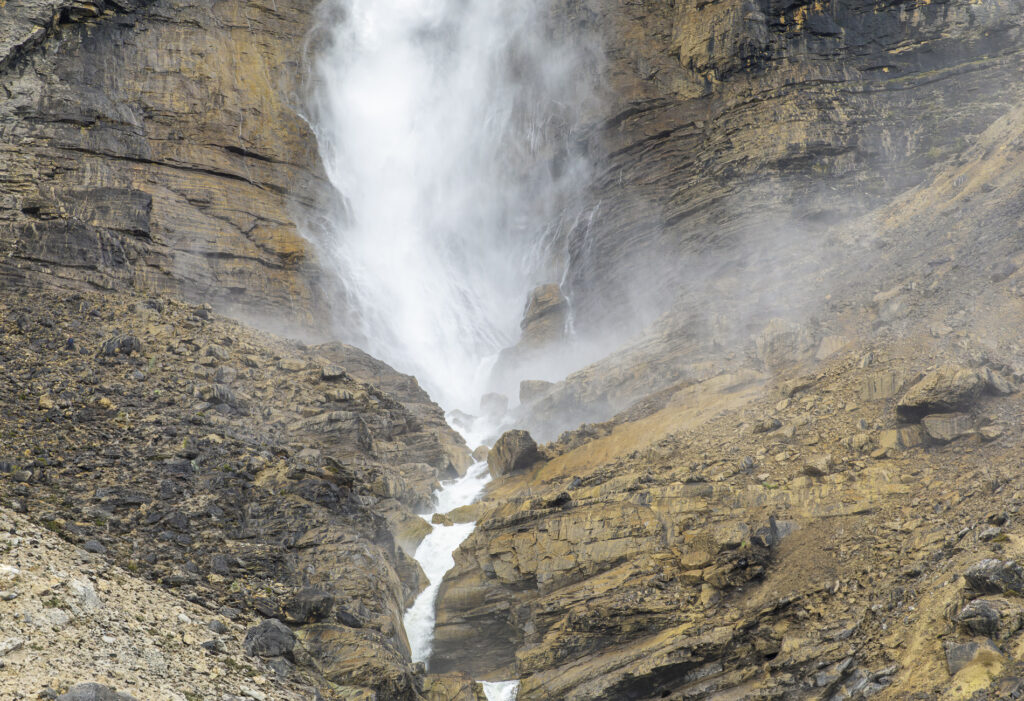
This is another view of Bow Lake, including the shoreline opposite Crowfoot Mountain. I facetiously refer to this location as Bow Lake Beach. Does it look inviting for swimming? Only the hardiest swimmers would venture into the lake, fed by melt water from the Bow Glacier at the far end of the lake.
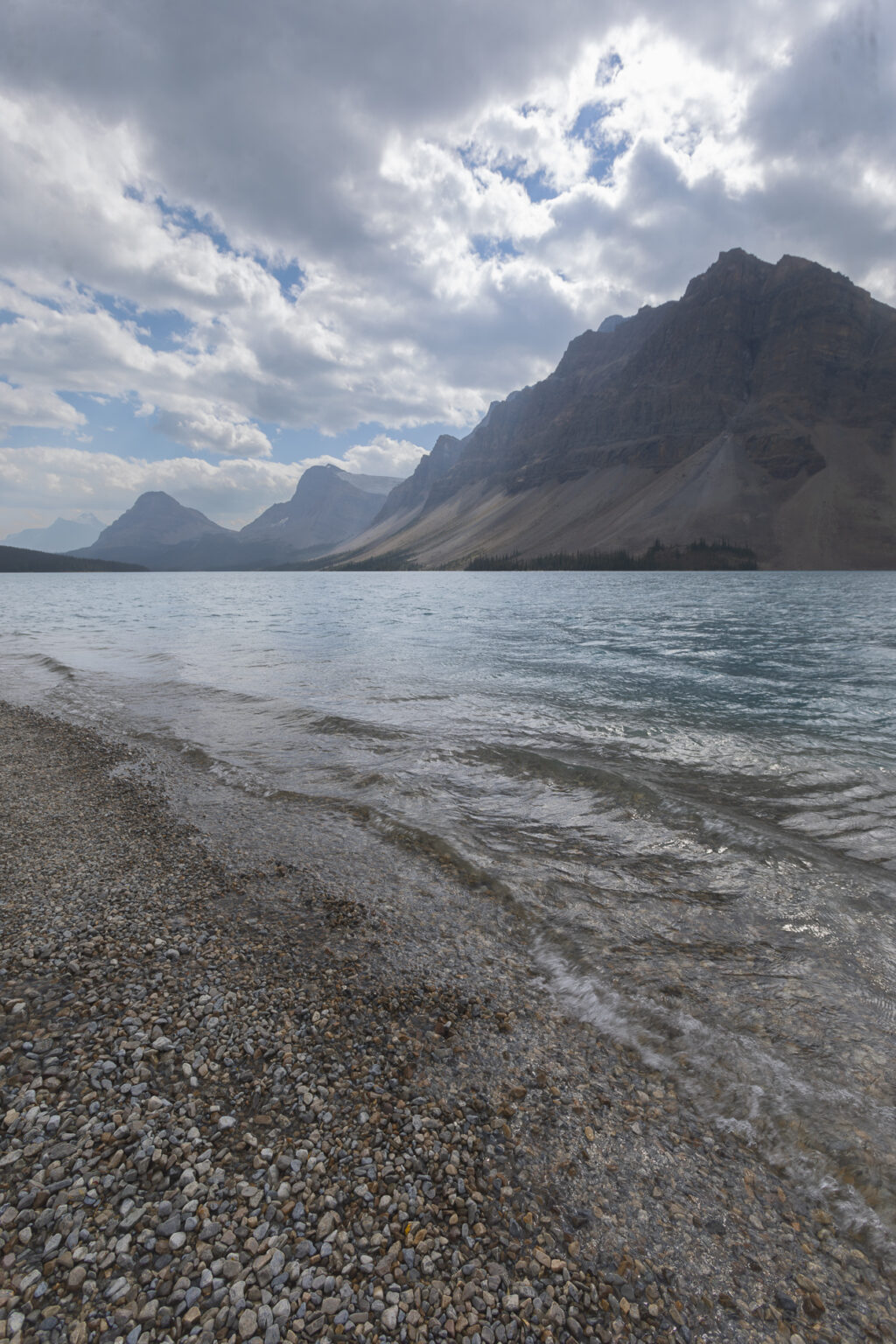
This is a lakeside shop on the shore of Emerald Lake. In summertime it rents canoes. In winter, the rental of choice is cross-country skis. In addition, the store offers seasonal clothing, as well as souvenirs. I was fortunate to capture the wharf and the lake on a calm day. I know there are people who really like reflections in the water.
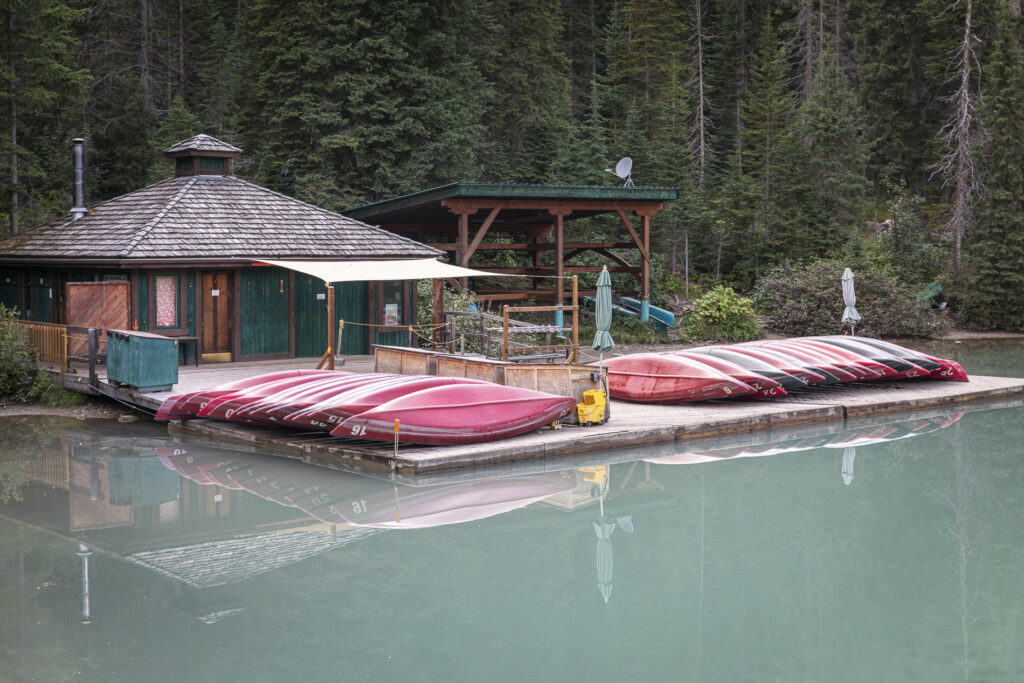
My timing was good for this scene, taken with a telephoto lens. I took this close-up of Crowfoot Mountain on a cloudy day, with sunlight penetrating the clouds, illuminating small areas of the rock.
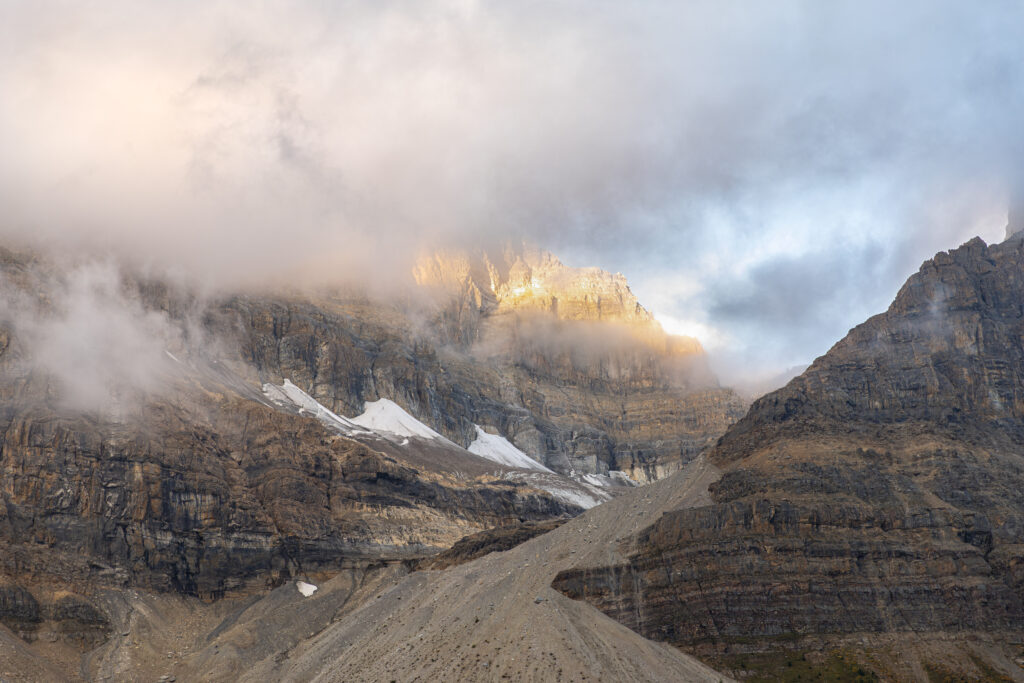
This is a different perspective of Peyto Lake, a view of the valley leading up to the Peyto Glacier in the distance. Like most lakes this area, it is fed with glacier meltwater. The stream flowing into the lake is visible, crossing the terrain just upstream of the lake. The glacial meltwater contains fine sediments of rock, known as rock flour, created by glacier movement grinding the rock beneath. When sunlight hits the water, the suspended particles reflect the shortest wavelengths: the purples and indigos. The water absorbs the longer wavelength reds, oranges, and yellows. That leaves mainly blues and greens to get scattered back to our eyes.
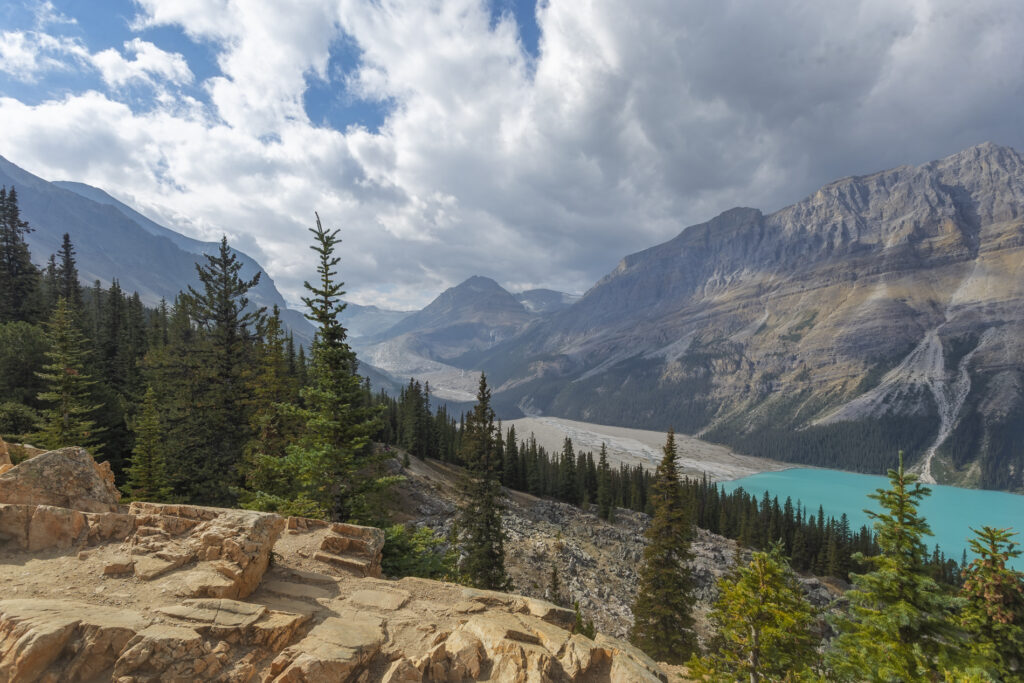
Here’s my last photograph for today. While preparing to photograph a nearby creek, Alex noted this interesting scene developing. Through a gap in the trees, we observed fog streaming down the a channel in the flank of Cascade Mountain. It was an interesting phenomenon we could not resist photographing. The fog dissipated a short time later and we moved on to our original, intended photo location, with our day’s portfolio a little richer.
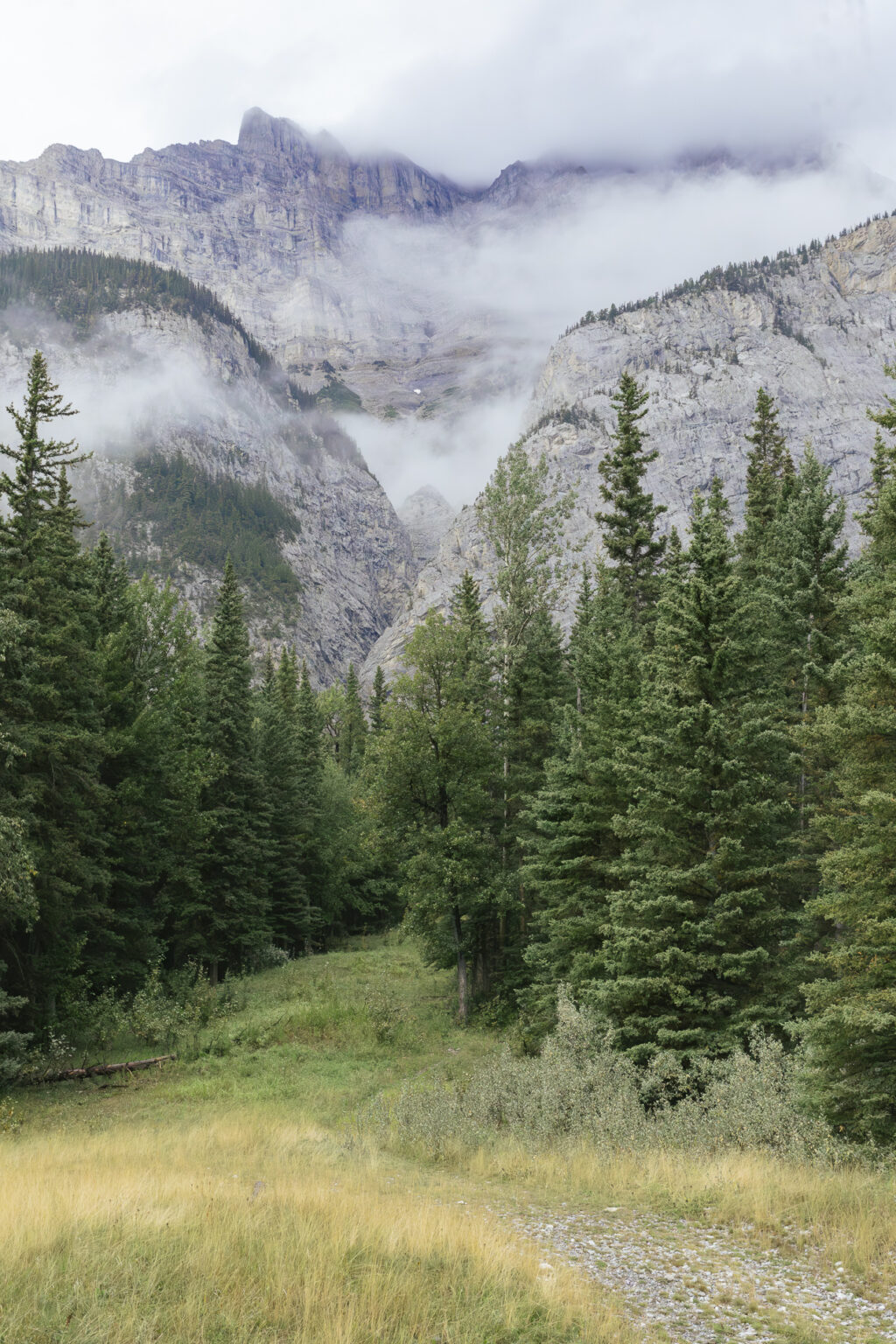
I hope you’ve enjoyed the photos from my last two posts “Visitor’s Tour”. I think I’ve exhausted the photos I wish to share from our four day shoot.
I look forward to getting out again soon, as the autumn leaves reach their colourful peak.
